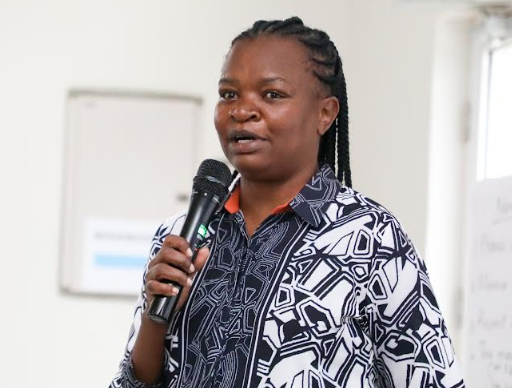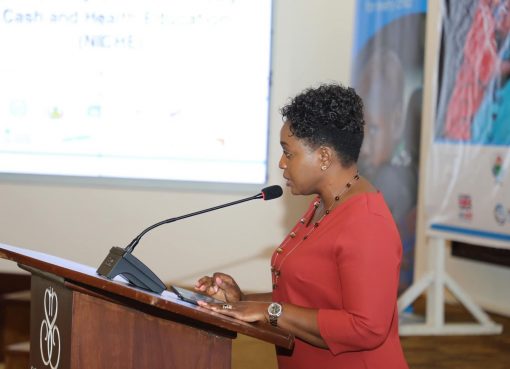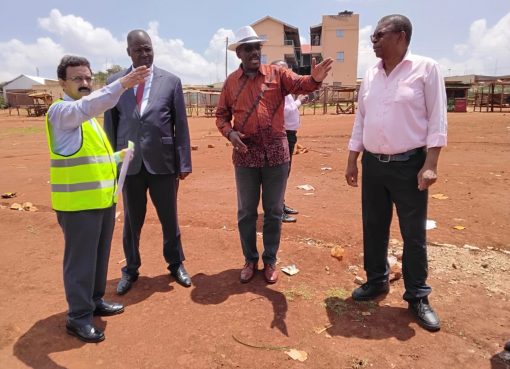Kenya, like many other countries, is striving to address the complex and multifaceted challenges of malnutrition.
According to the Kenya Demographic and Health Survey (2022), 18 percent of children under five are stunted, 10 percent are underweight, and nearly half of pregnant women suffer from iron deficiency anemia
Director of Nutrition and Dietetics Services, Ministry of Health Veronica Kirogo, speaking during a media toolkit dissemination and media review workshop organized by Global Alliance for Improved Nutrition (GAIN), said these statistics were ‘a call to action’.
“Malnutrition continues to cost our nation dearly, with losses estimated at 373.9 billion shillings annually, equivalent to 6.9percent of our GDP,” said Kirogo, in a speech read on her behalf by Emmanuel Mwenda, Project Officer in the Monitoring and Evaluation Department of Nutrition.
Kirogo explained that the government recognizes that to reverse this trend, there was need to go beyond health interventions alone.
The Ministry of Health, through the CAtalyzing Strengthened policy aCtion for heAlthy Diets and resiliencE (CASCADE) project under GAIN and in partnership with County governments and development partners, is committed to strengthening multi-sectoral approaches, especially at the community level, Kirogo added.
She termed the CASCADE media toolkit as an important step in aligning communication and advocacy efforts.
“The media, as the fourth estate, is a powerful partner in influencing public perception, policy decisions, and community behaviour. By equipping media champions with accurate, consistent, and evidence-based nutrition messaging, we can foster greater public understanding, accountability and ultimately, stimulate policy and resource action,” the Director said.
She further said that the workshop is an opportunity to build the capacity of media stakeholders in cross-cutting themes such as climate resilience, social protection, gender, and food systems, areas that are increasingly critical in shaping nutrition outcomes.
“Let us use this platform to learn from one another, harmonize our messages, and most importantly, recommit to ensuring that every Kenyan, especially the most vulnerable, has the opportunity to live a healthy and nourished life,” Karogo said.
Giving Nairobi County’s nutrition situation, the County Nutrition Coordinator Jessica Mbochi said the malnutrition burden among children below five years stands at stunting 11 percent (65,756), wasting at 3 percent (17,934,) underweight 15 percent (59,778) and overweight (35,867), while women of reproductive age at 57 Percent are overweight.
She explained that some of the key drivers boils down to low physical activity, food insecurity, poor childcare practices (especially daycares), poor water, sanitation, and hygiene (wash), high disease burden and also high maternal workload.
Mbochi however said that the County has been carrying out interventions at facility levels in terms of Maternal Child Health, Micronutrient Supplementation, Integrated Management of Acute Malnutrition, Diet Therapy and Baby Friendly Hospital Initiatives.
“At the school level, they have been engaged in the school feeding programme dubbed ‘dishi na County”, and nutrition sessions which include iodine tests in salt and deworming,” she said.
In the Kenya Nutrition Situation Overview: micronutrient deficiency shows over half (52.6percent) of the preschool children and 37.6 percent of school-age children suffer from marginal vitamin A deficiency, and one in four (26.3 percent) of preschool children are anaemic, and 41.6percent of pregnant women are also anemic.
According to Mwenda, the government has included nutrition priority interventions in the Medium-Term Plan IV of Vision 2030 (2023-2027) and over 40 Counties have developed and are implementing county nutrition action plans (CNAPs)
The Kenya Nutrition Situation also shows that the economic impact associated with undernutrition is quite significant, with far-reaching effects on health, education and productivity, with every dollar invested in nutrition having the potential to result in USD 22 in economic returns in Kenya.
Kenya faces the triple burden of malnutrition: undernutrition, micronutrient deficiencies, and overweight and obesity.
According to GAINs, CASCADE project, media plays a critical role when it comes to nutrition communication, and therefore the media tool that was finalized in January 2025 would be key and be an important advocacy platform that could be used to sensitize the public on good nutrition practices such as dietary diversity, consumption of locally produced nutritious foods, exclusive breastfeeding, and appropriate complementary feeding, among others.
By Wangari Ndirangu





